With their vivid pigeon’s blood hue, Burmese rubies exert a magnetic pull on collectors and auctioneers alike – and their value is on the rise.
The jewel ticked all the right boxes to be an auction success. Signed Van Cleef & Arpels and featuring a 3.21-carat Burmese ruby, the ring fetched nearly HKD 3.8 million ($483,288) at the Bonhams Jewels and Jadeite sale on June 20 — more than half a million beyond its top estimate of HKD 3.2 million. A consignment from the US, it sold at the auction house’s Hong Kong branch to a Taiwanese collector.
“It was a true pigeon’s blood color and had the rare combination of very strong red body color, red UV fluorescence, and excellent brilliance and transparency with no heat treatment — all attributes that make it desirable and highly collectible,” says Leslie Roskind, Bonhams head of jewelry for Hong Kong.
The fiery gemstones from the Mogok Valley in Myanmar — known as the “Valley of Rubies” — display a vividly pure red and extremely saturated color, while their natural fluorescence makes them look internally illuminated. In their natural state, they are among the scarcest gems in the world.
“Most Burmese rubies, like a majority of gemstones found in the market, have been heat-treated to enhance the color and clarity. The supply of unheated natural rubies is extremely limited and is therefore coveted by the most exclusive private collections,” notes Roskind.
Add that to the rarity of larger stones, and it’s no wonder auctioneers have recorded steep price increases. “Natural rubies over 5 carats that have not been heated are extremely rare and precious,” notes Kathy Ip, jewel specialist at Poly Auction. “The price of high-quality gemstones has been rising, and rubies have a high investment value. The auction price of unheated Burma rubies has risen [tremendously] in the past 20 years.”
Auctioneers agree that Burmese rubies are the hottest stones on the market right now. Eva Violante, senior specialist for jewelry at Phillips, points out that a blood-red ruby of homogenous color and excellent clarity is considerably harder to find than a diamond. “As diamonds have become more commoditized, we see collectors who typically invested in colorless diamonds are now broadening their portfolios to include important colored gemstones such as rubies,” she says.
And they’re not just a savvy investment. Gem lovers are also enticed by rubies’ auspicious connotations: Red represents good fortune, happiness and success in many cultures.
Dr. Sharon Novak, a curatorial advisor and gemologist who helps her clients build their jewelry collections, says rubies of the pigeon’s blood variety have something primal to them. “The presence of a very clear, deep blood-red attracts something elemental in all of us. It’s a symbol of love, of joy, of a beating heart, of our actual lifeblood. And the idea that these stones can come out of the earth in this miracle form continues to mesmerize.”
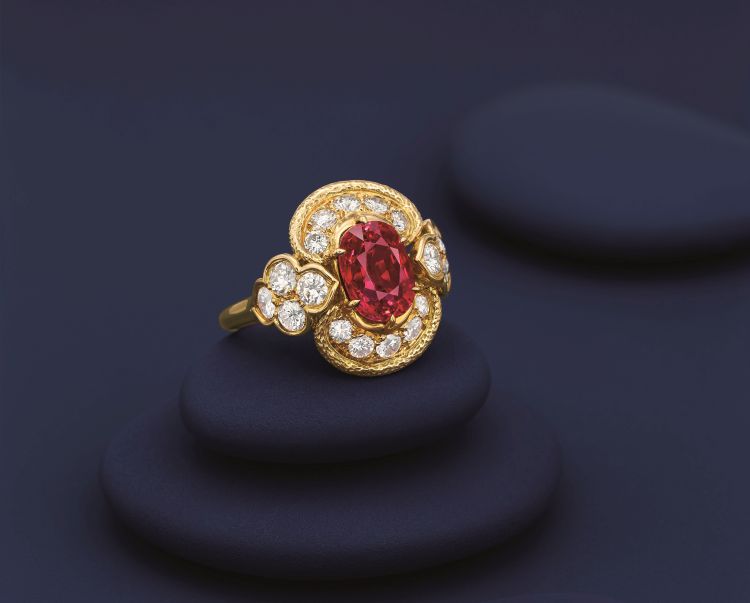
‘A life of its own’
The appeal of these crimson gems is universal. Auction houses have historically seen strong sales of rubies in their Asian market, and that trend has spread to the Americas, Europe and the Middle East. There are, however, some differences in taste depending on the market.
Americans tend to prefer a slightly brighter, lighter red — “a fire engine or a strawberry” shade — while Asians favor a deeper, richer, darker red, says Brett O’Connor, senior director of private sales for jewelry and timepieces at Heritage Auctions. High-end collectors are looking for a similar category, he reports: “a stone that is either eye-clean or virtually eye-clean, free of inclusions, a rich red color that almost glows, that has a life of its own.”
Although Novak is searching for the best stones at auction for her clients, she also advises them to see past certain criteria. “Rubies don’t have to be the best in the world. I always like to remind people that tutti frutti [rubies] aren’t the best in the world, because you want an opaque ruby to show the carving.”
She warns against applying diamond ratings to colored stones. “We see a lot of people get obsessed with requirements such as triple Ex in diamonds, and they try to extend it to colored gemstones. It’s not that simple. There’s a lot of magic in a good stone. It doesn’t have to be objectively eye-clean and phenomenal, and still you can find something incredibly beautiful in it.”
Novak’s advice to her clients is to buy the stone that resonates most deeply and matches their budgets. The emotional connection is a real consideration; some extraordinary rubies have made a lasting impression on the auction specialists who have handled them.
The Sunrise Ruby is universally mentioned as the most phenomenal stone that ever came to auction. It sold for $30 million at Sotheby’s Geneva in 2015.
“It was one of the most extraordinary pieces of natural beauty that one could possibly comprehend,” says Quig Bruning, head of the jewelry department at Sotheby’s New York. “It was this exceptional pigeon’s blood, clean, beautiful shape, and it was 25 carats. I can’t even fathom how nature can produce something like that.”
Daphne Lingon, head of jewelry for Christie’s Americas, says one of the most fascinating rubies she’s ever handled in her career was the DuPont Ruby, which sold for $8.9 million in New York in 2019.
“The exceptional color, transparency, weight (11.20 carats) and pigeon’s blood designation made it one of the most important to ever come to market,” she says.
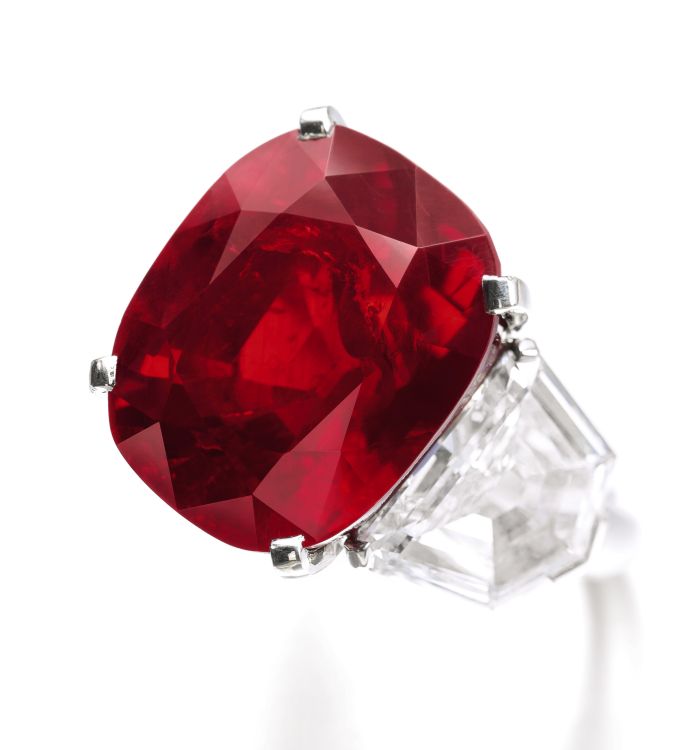
Eyes on Africa
A quick look at the provenance of the top-selling rubies at auctions in the past two decades confirms that Burmese specimens are the undisputed kings of the category. However, the dwindling supply from Myanmar (Burma) means collectors are looking toward east Africa to fulfill demand.
Roskind at Bonhams has already noticed a shift in a core segment. “As the Asian market matures and becomes more sophisticated, the origin of a gemstone is no longer the only determining factor for collectors,” she says.
Mozambique-mined stones display a brilliant red hue and high transparency, she notes. “With Burmese rubies weighing 5 carats or more becoming increasingly rare, the market is increasingly turning toward high-quality Mozambique rubies. As a result, the price of Mozambique rubies has steadily grown, from only just about one-tenth of that of Burmese rubies 15 years ago, to about half in recent years.”
Bruning at Sotheby’s also sees a “huge opportunity” for collectors of Mozambique rubies. He mentions a ring with a 6-carat Mozambique specimen that sold for around $75,000 per carat at a New York sale in June. “If it had been a Burmese ruby, it would have been $400,000 or $500,000 per carat,” he says.
Bruning has seen increasing international demand for Mozambican provenance, and the auction house responds by actively sourcing these stones. “We will have more Mozambique rubies that we will be offering in the future,” he says. “I think that our buyers are recognizing more and more that just because it’s not Burmese, it doesn’t mean it’s not extraordinary — and extraordinarily beautiful.”
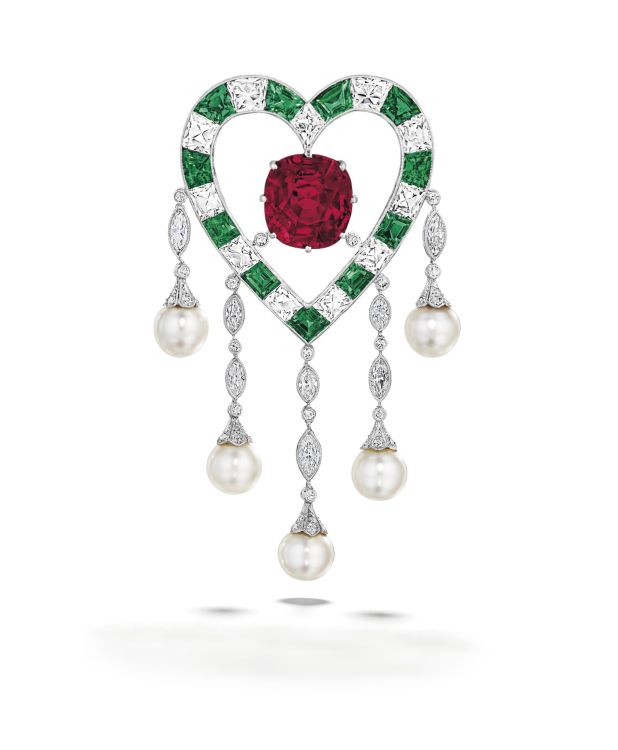
Main image: This ring with a cushion-shaped, 8.07-carat, pigeon’s blood Burmese ruby and 7.34 carats of pear-shaped diamonds sold for HKD 31.2 million ($4 million) at Poly Auction in Hong Kong in April. Photo: Poly Auction.

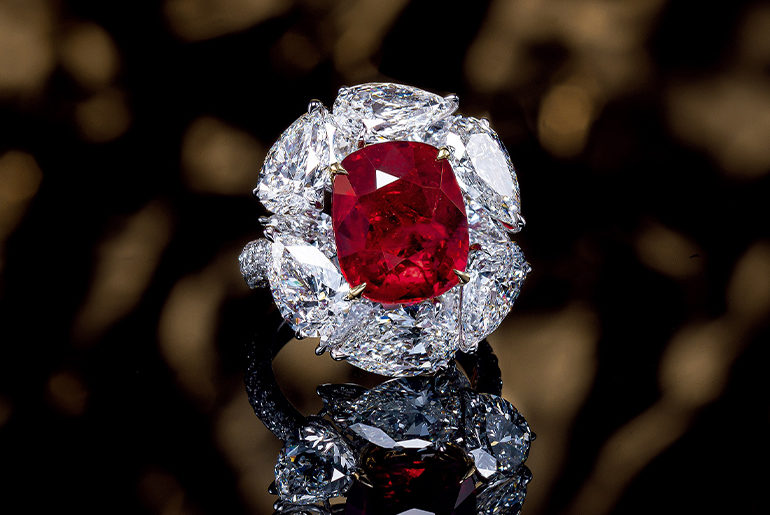
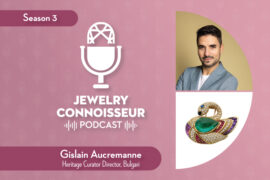
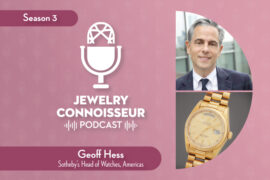
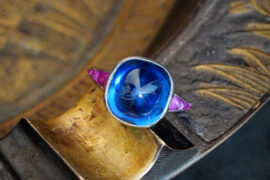
Comments are closed.